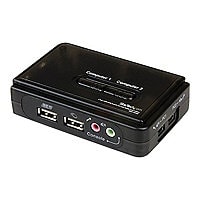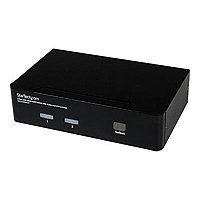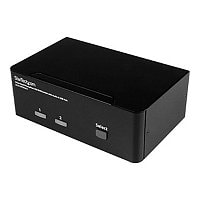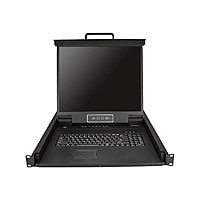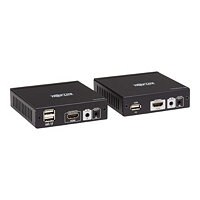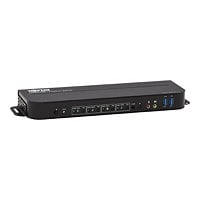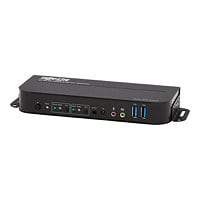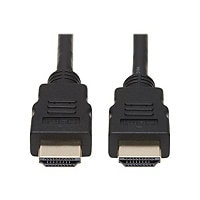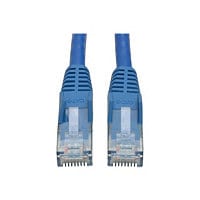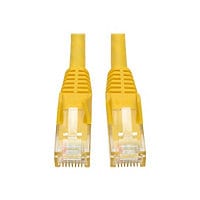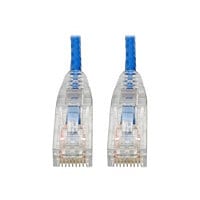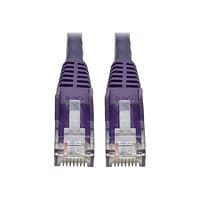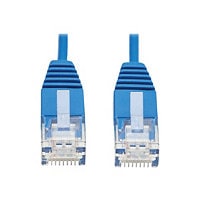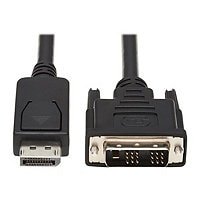By Reviewer836542 -
Gestion d’énergie
Low latency in mission-critical environments with different virtualization environments
What is our primary use case?
Our primary use case for KVM is our test environment. We utilize numerous servers and applications to test our core software, essential for operating mission-critical mobile networks.
Mission-critical communication solutions support advanced push-to-talk devices, akin to 4G devices, and comply with European and US standards. We perform tests using software that runs on Linux, atop KVM.
In production, we aim to offer these solutions to our clients, who are typically public transport companies and public safety organizations like police, fire brigades, and ambulances, as well as sectors like oil and gas and electricity companies.
How has it helped my organization?
KVM has benefited our organization by enabling us to assess different virtualization solutions with reduced latency, which is crucial for guaranteeing the reliability and real-time performance of our communication systems. This real-time capability of KVM enhances our capacity to deploy mission-critical solutions efficiently.
What is most valuable?
The most valuable feature of KVM is its superior real-time performance, which results in lower latency compared to alternatives like VMware and Microsoft. The ability to switch from one VM to another efficiently, thanks to the implementation of a real-time kernel, ensures delays remain minimal, thereby meeting our organization's performance requirements. This improved latency is critical because any delay in voice transmission could lead to life-threatening situations.
Additionally, KVM being open-source means that we are not obligated to pay for licenses, which significantly reduces costs and simplifies license handling for ourselves and on behalf of customers.
What needs improvement?
Although KVM meets our expectations, it can be somewhat fragmented with numerous management tools available, making it difficult to determine which tool to use. In comparison to VMware, which offers a more balanced set of management features, KVM could improve in terms of user-friendly tooling.
For how long have I used the solution?
We have been using KVM for approximately six months, in addition to our previous use of VMware ESXi and Microsoft Hyper-V technologies.
What do I think about the stability of the solution?
We are content with the stability of the solution. It is entirely stable, and we have not encountered any significant issues.
What do I think about the scalability of the solution?
The solution is well equipped to run our workloads, so scalability is not an issue.
How are customer service and support?
KVM is a community effort, and support is available through bulletin boards and help platforms. Paid support is also obtainable from companies like Red Hat for more critical issues.
Overall, I would rate the support experience as quite good.
How would you rate customer service and support?
Positive
Which solution did I use previously and why did I switch?
We previously used VMware and are transitioning from VMware to KVM. However, we still utilize VMware when customers request it. Our IT department also uses Microsoft Hyper-V when necessary.
How was the initial setup?
The initial setup of KVM is simple and uncomplicated.
What about the implementation team?
We have not found the implementation of KVM to be complicated. It requires only one technician for deployment.
What was our ROI?
KVM definitely saves costs since it is open-source and does not obligate us to pay for licenses as necessary with other virtualization solutions.
What's my experience with pricing, setup cost, and licensing?
KVM is free, but for confidence in business-critical environments, paid support is available. Compared to VMware and Microsoft, KVM offers better pricing and licensing options.
Which other solutions did I evaluate?
We evaluated VMware, Xen and Microsoft Hyper-V as alternatives to KVM.
What other advice do I have?
I would rate KVM nine out of ten points due to the variety of management tooling, which makes configuration and operation somewhat more challenging compared to VMware.
Which deployment model are you using for this solution?
On-premises
Disclaimer: I am a real user, and this review is based on my own experience and opinions.
What is our primary use case?
Our primary use case for KVM is our test environment. We utilize numerous servers and applications to test our core software, essential for operating mission-critical mobile networks.
Mission-critical communication solutions support advanced push-to-talk devices, akin to 4G devic
Read more
Written by a user while visiting
PeerSpot
By Arvi Limpadanai -
Gestion d’énergie
Good virtualization transition that cuts costs but needs better adaptability
What is our primary use case?
We moved from VMware to KVM and now use KVM for server virtualization.
How has it helped my organization?
Since we use a Docker, the virtualization works fine whether it's KVM or VMware. We don't use this feature much, our developers use Docker to create a container.
What is most valuable?
The solution overall is just okay. We moved since we are sharing the commercial term from publisher to subscription.
What needs improvement?
I have no comment. I just use it, and it's okay. However, the scalability part should be better.
For how long have I used the solution?
I started using the solution some years ago.
What do I think about the stability of the solution?
The stability is just okay. We haven't experienced any major glitches or downtimes.
What do I think about the scalability of the solution?
I'd rate scalability maybe seven or eight out of ten. It could be better.
How are customer service and support?
We use community support and search for help on the internet.
How would you rate customer service and support?
Neutral
Which solution did I use previously and why did I switch?
We used VMware before switching to KVM.
How was the initial setup?
For us, the initial setup is okay and simple. We can live with it.
What's my experience with pricing, setup cost, and licensing?
It's just a small setup, which helps save the operation cost.
What other advice do I have?
For basic functions, it should be okay. It helps save operational costs.
I'd rate the solution seven out of ten.
Which deployment model are you using for this solution?
On-premises
Disclaimer: I am a real user, and this review is based on my own experience and opinions.
What is our primary use case?
We moved from VMware to KVM and now use KVM for server virtualization.
How has it helped my organization?
Since we use a Docker, the virtualization works fine whether it's KVM or VMware. We don't use this feature much, our developers use Docker to create a container.
What is mo
Read more
Written by a user while visiting
PeerSpot
By Lan Tuong -
Gestion d’énergie
Useful to manage the virtual environments
What is most valuable?
The most valuable features of KVM for us are the console, which allows us to build or clone VMs quickly, and the ability to take snapshots and recreate new VMs rapidly. That's one of the things we love about KVM.
The built-in management console, Auto KVM, is the most valuable tool for managing our virtual environments. We use it most to create and fire up new VMs or clone them for customers based on requests.
The migration tools have worked quite well for us. We're moving from an Oracle Solaris platform for KVM logical domains, upgrading, and using KVM from Red Hat. It's slightly different but very similar to Oracle Unbreakable Linux, which is basically a clone of Red Hat. Oracle's console is easier to use than Red Hat's, though.
What needs improvement?
I think the management console has room for improvement. It could be more straightforward and user-friendly, like VMware's Console Management. This would make it easier for system admins to use and reduce training needs.
Regarding new features, we'll see when we have a chance to upgrade to a new version. We don't have any projects planned as we just upgraded to Red Hat 9.4 for some customers. Our environment is quite stable, so I don't expect any big changes until at least June next year.
For how long have I used the solution?
I have been working with the product for a couple of years.
What do I think about the stability of the solution?
I would rate the tool's stability an eight to nine out of ten.
What do I think about the scalability of the solution?
I would rate the scalability between eight and nine out of ten. Our clients are primarily enterprise businesses.
How are customer service and support?
Regarding technical support, I don't need to call support often as we have a strong internal team. Support for Linux is pretty good, but support for Windows on KVM is more complex than VMware.
How would you rate customer service and support?
Neutral
How was the initial setup?
On a scale of one to ten, with one being difficult and ten being easy, I would rate our experience with the initial KVM setup as eight. From my experience, it's very easy if you're doing it a lot. But for beginners, there might be a learning curve.
We currently deploy the tool more on-premises and in private clouds for our clients' organizations.
The deployment time depends on what you're asking. To set up a brand new server with KVM, I would say it takes about half a day. But if you're just building a KVM from an existing setup, it depends on the user's method.
What's my experience with pricing, setup cost, and licensing?
The product's pricing is above average but cheaper than that of VMware. I can't provide specific licensing costs, but we have a contract with Red Hat for client support that covers everything. There are no additional costs beyond the standard licensing fees.
What other advice do I have?
I would recommend KVM for virtualization needs, especially for Linux environments. However, it may not work as well with certain software licenses like Oracle or IBM that control the entire server instead of by VM.
I rate it an eight out of ten.
Disclaimer: My company has a business relationship with this vendor other than being a customer:Partner
What is most valuable?
The most valuable features of KVM for us are the console, which allows us to build or clone VMs quickly, and the ability to take snapshots and recreate new VMs rapidly. That's one of the things we love about KVM.
The built-in management console, Auto KVM, is the most valuable tool for m
Read more
Written by a user while visiting
PeerSpot
By GiovanniRamirez -
Gestion d’énergie
Provides ease of management and has good stability
What is our primary use case?
I have used KVM in production, testing, and development environments. Additionally, I have configured it in both normal and high-availability environments.
What is most valuable?
The platform's most valuable features are stability and ease of management.
What needs improvement?
They could provide a more comfortable and easier-to-manage interface for the product, whether text-based or graphical. It can be challenging to manage without the support of additional tools.
For how long have I used the solution?
I have been working with KVM for around three years.
What do I think about the stability of the solution?
The product is stable. I rate the stability a ten.
What do I think about the scalability of the solution?
The product is scalable. I rate the scalability a seven out of ten.
How are customer service and support?
I have resolved any issues I encountered through the KVM documentation and user forums without needing to ask direct questions to the community.
Which solution did I use previously and why did I switch?
KVM is superior to VirtualBox regarding stability, scalability, and high availability capabilities. While VirtualBox is also a good tool, KVM, especially with Proxmox, offers better deployment options and more flexibility in licensing compared to other virtualization solutions like Hyper-V or VMware.
How was the initial setup?
The setup is complicated. Depending on the environment, it typically takes two days to one week to complete.
I rate the process a three.
What about the implementation team?
Typically, deploying KVM requires only a single individual. However, this person must possess specialized skills in virtualization, Linux, and potentially programming environments such as Bash.
What's my experience with pricing, setup cost, and licensing?
I use KVM for free through Proxmox, which offers a free license alternative. If I needed direct technical assistance, I could purchase a Proxmox subscription at an affordable price.
What other advice do I have?
I recommend KVM to others and rate it a ten.
Disclaimer: I am a real user, and this review is based on my own experience and opinions.
What is our primary use case?
I have used KVM in production, testing, and development environments. Additionally, I have configured it in both normal and high-availability environments.
What is most valuable?
The platform's most valuable features are stability and ease of management.
What needs improvement?
Read more
Written by a user while visiting
PeerSpot
By Martin-Potgieter -
Gestion d’énergie
Performs well, saves time and money, and integrates well with operating systems
What is our primary use case?
We use the solution for production systems. We use it a lot in the Kubernetes environment. We are investing in microservices and Kubernetes. The tool enables virtualization.
How has it helped my organization?
Our whole microservice environment runs on the solution. We have quite a few Windows environments that run on it.
What is most valuable?
I've never had an issue with the tool. The performance is great. The product runs on Linux. KVM comes in as a standard with Linux. It integrates perfectly with Linux. KVM is written in Linux.
What needs improvement?
The product must provide better performance monitoring features.
For how long have I used the solution?
I have been using the solution for four years.
What do I think about the stability of the solution?
The tool is very stable. Since we provisioned the box, it hasn't been rebooted yet. It has been 1400 days. I rate the stability a ten out of ten.
What do I think about the scalability of the solution?
I've never had any issues with scalability. It doesn't even occur to me. I rate the scalability a nine out of ten. We have around 1000 users in our organization.
How was the initial setup?
The initial setup is simple. I rate the ease of setup a nine out of ten. If the systems are already virtualized, the deployment takes a few minutes. To deploy the product, we must unload our previous virtual environment and reload the tool. It does the migrating for us.
What was our ROI?
The solution saves us time and money.
What's my experience with pricing, setup cost, and licensing?
The tool is free.
Which other solutions did I evaluate?
KVM is similar to products like Acropolis and Nutanix. Nutanix’s virtualizer is based on KVM.
What other advice do I have?
We use another security tool on top of KVM. It checks for encryption. We must go online and find a solution if we have any issues. People who want to use the solution must ensure they have a technical team. We are on our own. We should not use the product if we do not have the infrastructure expertise. Overall, I rate the product an eight out of ten.
Which deployment model are you using for this solution?
Private Cloud
Disclaimer: I am a real user, and this review is based on my own experience and opinions.
What is our primary use case?
We use the solution for production systems. We use it a lot in the Kubernetes environment. We are investing in microservices and Kubernetes. The tool enables virtualization.
How has it helped my organization?
Our whole microservice environment runs on the solution. We have quite
Read more
Written by a user while visiting
PeerSpot
By Rohail Aslam -
Gestion d’énergie
Affordable but lacks scalability and often causes stability issues
What is our primary use case?
We use KVM for virtualization needs across various clients, allowing us to run different operating systems and machine types, including Windows and Linux. It serves as a flexible solution for creating and managing virtual environments tailored to each client's requirements.
What is most valuable?
One of the best features of KVM is its user-friendly interface.
What needs improvement?
In terms of improvement, I would like to see more focus on microservices and integration with Kubernetes or OpenShift. This would enhance scalability and management capabilities, aligning KVM with industry standards and providing clients with more comprehensive features and options.
For how long have I used the solution?
I have been working with KVM for seven years.
What do I think about the stability of the solution?
I would rate the stability of KVM as a six out of ten. There have been stability issues and occasional crashes with KVM, especially if incorrect commands are executed. Unlike VMware or Proxmox, which offer additional management tools, KVM is more sensitive to command errors and requires precise handling to avoid disruptions.
What do I think about the scalability of the solution?
I would rate the scalability of KVM as a six out of ten. In our small to medium-sized enterprise, we cater to various clients, including larger companies with over 500 employees and sometimes even up to 1,000 employees.
How was the initial setup?
I would rate the easiness of the initial setup as an eight out of ten. Deployment of KVM is quick and straightforward, usually taking only a short time. However, managing ongoing operations, especially for new team members or those unfamiliar with KVM, can be challenging and may require additional time and training.
What's my experience with pricing, setup cost, and licensing?
KVM is quite affordable.
What other advice do I have?
KVM has been a reliable solution for our on-premises virtualization needs, but as we transition to the cloud with Azure or AWS, its role becomes less significant. We are focused on migrating our workloads to the cloud platforms for scalability and flexibility.
The performance and scalability of KVM have impacted our operations positively, allowing us to efficiently manage workloads and accommodate growth. However, when onboarding new clients or managing dynamic workloads, it can sometimes pose challenges in workload management.
KVM can integrate with our existing infrastructure with some configuration adjustments. However, managing existing workloads on bare metal with KVM can be challenging and requires careful optimization of specific parameters during integration.
I wouldn't recommend KVM to new customers or clients. While it serves as the foundation of virtualization, there are other Linux flavors and applications like OpenShift that offer easier workload management, optimization, and scalability.
Overall, I would rate KVM as a five out of ten. While I have experience with it and have worked on various environments like KVM, HVM, PVM, and LVM, it hasn't consistently met all my expectations over time.
Disclaimer: My company has a business relationship with this vendor other than being a customer:Implementer
What is our primary use case?
We use KVM for virtualization needs across various clients, allowing us to run different operating systems and machine types, including Windows and Linux. It serves as a flexible solution for creating and managing virtual environments tailored to each client's requirements.
What
Read more
Written by a user while visiting
PeerSpot
By Fausto Kenji Natsumeda -
Gestion d’énergie
Helps to deploy application servers and host websites
What is our primary use case?
We primarily use KVM to deploy application servers and host websites. We aim to explore its features further to enhance our projects and implement diverse environments within this virtualization software.
What is most valuable?
I appreciate the network passcode feature in KVM, as it provides a convenient way to manage DNS and cloud hosting.
What needs improvement?
I have encountered difficulties in getting the tool's documentation.
For how long have I used the solution?
I have been using the product for two years.
What do I think about the stability of the solution?
In my experience, I haven't encountered any issues with stability. Since I installed and started using it, the system has been working very well.
What do I think about the scalability of the solution?
My company has five users for the product.
How are customer service and support?
I haven't contacted technical support yet.
How was the initial setup?
KVM's initial installation was a bit challenging for me, but I believe it's more manageable for those with Linux expertise, especially given the available documentation. It took me approximately five days, working about three hours per day, to fully implement it.
What about the implementation team?
I did the deployment myself.
What other advice do I have?
I rate the overall product a seven out of ten. You need to have good knowledge of Linux and networks. I would recommend the product to my colleagues.
Disclaimer: I am a real user, and this review is based on my own experience and opinions.
What is our primary use case?
We primarily use KVM to deploy application servers and host websites. We aim to explore its features further to enhance our projects and implement diverse environments within this virtualization software.
What is most valuable?
I appreciate the network passcode feature in KVM, a
Read more
Written by a user while visiting
PeerSpot
By Nayan Gohel -
Gestion d’énergie
Useful for virtualization and doesn't require third-party applications
What is our primary use case?
We use KVM for virtualization.
What is most valuable?
The tool's most valuable feature is backup. The product makes it easy to manage virtual machines. Other tools require third-party applications like VMware and vSphere. However, KVM doesn't require these applications.
For how long have I used the solution?
I have been using the product for six to seven years.
What do I think about the stability of the solution?
The data is in high availability. If my servers undergo maintenance, we switch to another virtual machine host. We delete the maintenance activity, restoring it to the original state, ensuring the users have no downtime.
What do I think about the scalability of the solution?
We can add multiple hosts. Currently, we have three physical hosts with 30-40 virtual machines running. If there is a requirement change, we can easily add more rules or expand the cluster without any issues.
How are customer service and support?
We rely on community support since we use the tool's open-source version. Tech support is available for subscription-based versions.
Which solution did I use previously and why did I switch?
I have worked with VMware before KVM. You need a subscription and license to work with VMware. VMware has features like vMotion and storage vMotion. KVM has the same features as well. The main difference between the two is in licensing costs.
How was the initial setup?
KVM is easy to install and manage. After installing the hypervisor, you can manage changes easily from the web console. You can modify policies, adjust settings like high availability, and access other advanced configurations by logging in. You can complete the deployment in one host in 10-15 minutes.
What's my experience with pricing, setup cost, and licensing?
KVM is an open-source solution.
What other advice do I have?
I rate the product a nine out of ten.
Disclaimer: I am a real user, and this review is based on my own experience and opinions.
What is our primary use case?
We use KVM for virtualization.
What is most valuable?
The tool's most valuable feature is backup. The product makes it easy to manage virtual machines. Other tools require third-party applications like VMware and vSphere. However, KVM doesn't require these applications.
For how
Read more
Written by a user while visiting
PeerSpot






